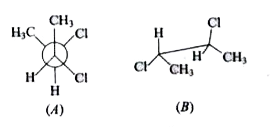Which of the following statements regarding the variation of atomic radii in the periodic table is not true?
In a group, there is continuous decrease in size with increase in atomic number.
The size of inert gases is larger than halogens.
The size of inert gases is larger than halogens.
In 3rd period, the size of atoms increase with increase in atomic number.
The correct Answer is:D
To determine which statement regarding the variation of atomic radii in the periodic table is not true, we will analyze each option provided.
1. Understanding Atomic Radii Trends:
- Atomic radii generally decrease across a period from left to right due to the increasing nuclear charge which pulls the electrons closer to the nucleus.
- Atomic radii increase down a group because additional electron shells are added, which outweighs the increased nuclear charge.
2. Analyzing Each Statement:
- Option 1: "In a group, there is a continuous decrease in size with an increase in atomic number."
- This statement is not true. In reality, atomic size increases down a group as additional electron shells are added.
- Option 2: "The size of inert gases is larger than halogens."
- This statement is true. Inert gases have completely filled electron shells, leading to a larger atomic radius compared to halogens, which have partially filled shells.
- Option 3: "In the third period, the size of the atom increases with an increase in atomic number."
- This statement is not true. In the third period, atomic size actually decreases as you move from sodium (Na) to argon (Ar) due to increasing nuclear charge.
- Option 4: "In the third period, the size of the atom decreases with an increase in atomic number."
- This statement is true. As explained, atomic size decreases across a period.
3. Conclusion:
- The statements that are not true are Options 1 and 3. However, since the question asks for a single statement that is not true, we can conclude that Option 1 is the most straightforwardly incorrect regarding the trend in atomic radii in groups.
Final Answer:
The statement that is not true is: Option 1: In a group, there is a continuous decrease in size with an increase in atomic number.
---
- Atomic radii generally decrease across a period from left to right due to the increasing nuclear charge which pulls the electrons closer to the nucleus.
- Atomic radii increase down a group because additional electron shells are added, which outweighs the increased nuclear charge.
- Option 1: "In a group, there is a continuous decrease in size with an increase in atomic number."
- This statement is not true. In reality, atomic size increases down a group as additional electron shells are added.
- Option 2: "The size of inert gases is larger than halogens."
- This statement is true. Inert gases have completely filled electron shells, leading to a larger atomic radius compared to halogens, which have partially filled shells.
- Option 3: "In the third period, the size of the atom increases with an increase in atomic number."
- This statement is not true. In the third period, atomic size actually decreases as you move from sodium (Na) to argon (Ar) due to increasing nuclear charge.
- Option 4: "In the third period, the size of the atom decreases with an increase in atomic number."
- This statement is true. As explained, atomic size decreases across a period.
- The statements that are not true are Options 1 and 3. However, since the question asks for a single statement that is not true, we can conclude that Option 1 is the most straightforwardly incorrect regarding the trend in atomic radii in groups.
The statement that is not true is: Option 1: In a group, there is a continuous decrease in size with an increase in atomic number.
Topper's Solved these Questions
- CLASSIFICATION OF ELEMENTS AND PERIODICITY Book:NCERT FINGERTPS ENGLISHChapter:CLASSIFICATION OF ELEMENTS AND PERIODICITY Exercise:HOTS
Explore 10 Videos
- CLASSIFICATION OF ELEMENTS AND PERIODICITY Book:NCERT FINGERTPS ENGLISHChapter:CLASSIFICATION OF ELEMENTS AND PERIODICITY Exercise:EXEMPLAR PROBLEMS
Explore 12 Videos
- CHEMICAL BONDING & MOLECULAR STRUCTUREBook:NCERT FINGERTPS ENGLISHChapter:CHEMICAL BONDING & MOLECULAR STRUCTUREExercise:Assertion And Reason
Explore 15 Videos
- ENVIRONMENTAL CHEMISTRYBook:NCERT FINGERTPS ENGLISHChapter:ENVIRONMENTAL CHEMISTRYExercise:Assertion And Reason
Explore 15 Videos
Similar Questions
Knowledge Check
Which of the following statements regarding an anion is not true?
AThe gain of an electron leads to the formation of an anion.BThe radius of the anion is larger than the atomic radius of its parent atom.CThe effective nuclear charge increases when an anion is formedDElectron cloud expands due to increased repulsion among the electrons.
Which of the following is true regarding sperm?
View SolutionWhich of the following statement regarding catalyst is not true?
View SolutionWhich of the following statements regarding the atmosphere are true ?
View SolutionWhich one of the following statement regarding BOD is true?
View SolutionWhich of the following statements regarding copper salts is not true?
View SolutionWhich of the following statements regarding copper salts is not true?
View SolutionWhich of the following statements regarding the projections shown below is true ?

View Solution